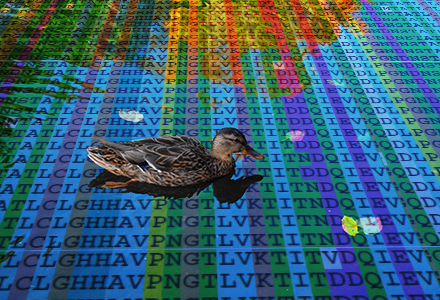Abstract
Human influenza pandemics have historically been caused by reassortant influenza A viruses using genes from human and avian viruses. This genetic reassortment between human and avian viruses has been known to occur in swine during viral circulation, as swine are capable of circulating both avian and human viruses. Therefore, avian-to-swine transmission of viruses plays an important role in the emergence of new pandemic strains. The amino acids at several positions on PB2, PB1, and PA are known to determine the host range of influenza A viruses. In this paper, we track viral transmission between avian and swine to investigate the evolution on polymerase genes associated with their hosts. We traced viral transmissions between avian and swine hosts by using nucleotide sequences of avian viruses and swine viruses registered in the NCBI GenBank. Using BLAST and the reciprocal best hits technique, we found 32, 33, and 30 pairs of avian and swine nucleotide sequences that may be associated with avian-to-swine transmissions for PB2, PB1, and PA genes, respectively. Then, we examined the amino acid substitutions involved in these sporadic transmissions. On average, avian-to-swine transmission pairs had 5.47, 3.73, and 5.13 amino acid substitutions on PB2, PB1, and PA, respectively. However, amino acid substitutions were distributed over the positions, and few positions showed common substitutions in the multiple transmission events. Statistical tests on the number of repeated amino acid substitutions suggested that no specific positions on PB2 and PA may be required for avian viruses to infect swine. We also found that avian viruses that transmitted to swine tend to process I478V substitutions on PB2 before interspecies transmission events. Furthermore, most mutations occurred after the interspecies transmissions, possibly due to selective viral adaptation to swine.
